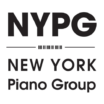
Since 1987 when they began playing together, Carles and Sofia’s international career has led them to appear in famous venues like Carnegie Hall (New York), Kolarac Memorial Hall (Belgrade) or Teatro Solís (Montevideo). They regularly perform in world capitals such as Paris, London, Madrid, Brussels, Rome, Barcelona, Milan, Prague, Belgrade, Tokyo, Kuala Lumpur, Shanghai, St. Petersburg, Moscow or Buenos Aires in recital for four hands or with orchestras including London City Chamber Orchestra, Orquestra Simfònica de Sao Paulo, Orchestre de Chambre du Namurois, Tokio Chamber Orchestra, Malaysia Philarmonic Orchestra and Hermitage State Orchestra.
Both were born in Girona (Catalonia, Spain) and showed exceptional musical talent early on. After graduating college in Barcelona Conservatory, they continued their musical training, first in the Ecole Normale in Paris, then at Hartt School of Music (University of Hartford, USA). The two professors who had the greatest influence on the duo are the Russian pianist Nina Svetlanova and the Brazilian pianist Luiz de Moura Castro. Their repertoire ranges from Bach to 21st century and includes all major works for piano four hands together with the most brilliant and demanding orchestral transcriptions.
"…but the real secret is to feel the music together…"
How did you two come together as a duo?
Back in 1987, Sofia’s piano teacher had the idea to make us play together as a colophon of her students’ recital. She suggested we could play 4 Brahms Waltzes for piano four hands. For us, it was the first time to play as piano duo… As you can guess, we loved it! From then on, we did not stop…
What are some ingredients that make a successful piano duo?
Of course, the same ingredients as all the other musicians are necessary: discipline, hard work… talent is not enough… Many people think that the secret of a piano duo is to practice a lot in order “to play together” (to hit the notes exactly at the same time), but the real secret is “to feel the music together”. If you feel the music the same way, then there is no problem on playing together. And the secret of feeling the music the same way is having the same background, learning together, listening to music together, discussing about music together, enjoying life together… After all that, then of course, you “feel and play” together.
Since you’re both from Spain, do you feel that you have a natural affinity towards Spanish composers? Also, do you find it easier to interpret music by Spanish composers?
Being Spanish gives you the opportunity to know more deeply all the folklore of Spain, which is very vast. Not only the flamenco is Spanish, every region of Spain has their own songs and dances, which are very different from one another. Of course, we studied all those different styles and probably know more deeply the difference between all of them, but we must say that there are other non-Spanish performers (like for instance Artur Rubinstein) who play Spanish music with a great style and flavor.
Granados, Manuel de Falla and Albeniz are popular Spanish composers. Do you have a favorite Spanish composer? Why is he/she your favorite?
It is very difficult to choose one. Although all of them are Spanish and have composed about the Spanish folklore, they all have their own accent and their own style. We could say Albéniz is more “popular” (although technically difficult), Falla emphasizes more in the “flamenco” and Granados is more “romantic”. It depends on the moment. At present, of course, since we are celebrating 100th Anniversary of Granados’ death and we worked so hard to play the new version of Goyescas, we are in love with “Granados”.
How can one learn to interpret Spanish music well?
You have to have a profound knowledge of all the different regions of Spain and its own folklore, the difference between the typical songs and dances of every region and its specificities. It’s important not to think that the “flamenco” is the only Spanish music style. Spain has a very rich and varied folklore with Jotas, Sardanas, Havaneras, Chotis… and many others. And, if possible, we recommend a long stay in Spain, to understand the different psychologies and characters of each Spanish region.
I understand you have played at Carnegie Hall before. How do you feel about returning to play at Carnegie Hall? Do you expect anything different?
This is our second time at Carnegie Hall. Of course, we will never forget the first time. For us (we guess for many other musicians), it was a dream and when a dream comes true, it is something really especial. In addition, when you are playing there, you have a very special feeling.
It’s the hall where all our beloved pianists of the past have played. It’s an honor to play where all our myths from youth have performed. We are really excited about returning at Carnegie Hall! This time will be very different and special because we are premiering a new piece, but especially because our two daughters will be there and that makes us really happy!
In this concert, the two of you will be giving a world premiere of the transcription for piano four hands, by Abraham Espinosa, of the Opera ‘Goyescas’, to commemorate the 100th Anniversary of Granados’s Goyescas. Can you tell us a little about the four-hand version? For example, is it very different from the solo piano version?
The transcription is made from the Opera. You know that Granados first wrote the piano version and then from that, he wrote an Opera with the libretto of Fernando Periquet. In the transcription for piano four hands, since it is made from the Opera, one of the differences for instance is in the number of pieces: The Opera opens with an overture and you can hear The Pelele, then we also have “La Calesa” and one “Intermezzo” which are not in the piano solo version. Another difference is the tempi, sometimes they change a little bit in the opera, because it’s supposed to be sang. Tempi are slower or faster according to the text, so in the four hands version we tried to respect this changes of tempi in order to accomplish a very lyrical version. Compared to the piano solo version, in general is richer in sound and counterpoint because it’s taken from the orchestral and vocal parts.
Alicia De Larrocha, a legendary Spanish pianist, has recorded the Goyescas suite for solo piano. What do you think about her interpretation? Are there any other pianists whose recording of Spanish piano music you admire?
Alicia de Larrocha is the reference for Spanish music, with no doubt! We think Goyescas is probably the best piece she ever recorded. We like her very much, she was able to play anything and everything she played is a masterpiece, but we especially love “Goyescas”. It is very virtuoso but flexible, inspired and romantic at the same time. She was unique and her recording of Goyescas is really unique in the world. As we mentioned before, Artur Rubinstein has a very interesting recordings. He had a very special taste for Spanish music and we love, for instance, his recording of the “Danza del Fuego” (Fire Dance) by Manuel de Falla. Of course, we also appreciate very much the recordings of Joaquín Achúcarro and Rafael Orozco.
Would you like to share your future plans? Such as CD, concert, etc?
After the premiere of the “Goyescas” for piano four hands at Carnegie, we will be playing it through 2016 in many places in Europe (Italy, Spain, Germany, France, Croatia…), South America (Argentina, Uruguay, Peru) and also in Asia(China and Thailand). And in March we will record the CD of it for the label KNS Classical. Another future plan which makes us really happy is from our mentoring project, the “Music Talent Lab”, which we will start in London in April with a first seminar to help young musicians to discover the path to follow in order to have the career of their dreams.
Carles & Sofia Duo performs on Thursday, January 28, 2015 at Carnegie Hall. For tickets, click here. Learn more about Carles & Sofia Piano Duo at http://www.carlesandsofia.com.

